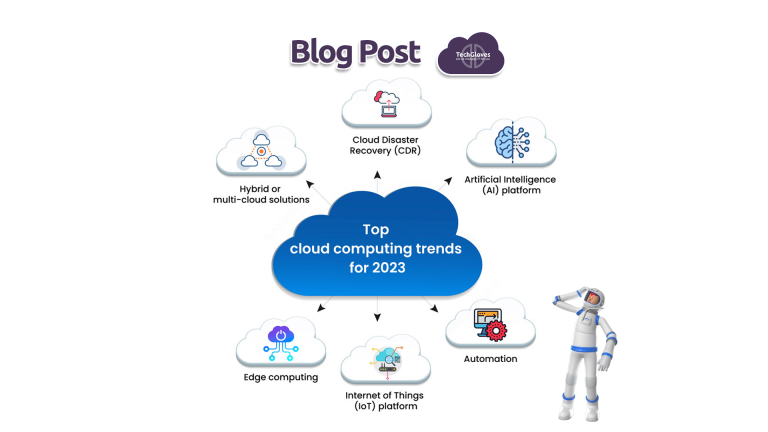Cloud computing has become an integral part of our digital landscape, transforming the way individuals and businesses operate. In recent years, the cloud computing industry has seen remarkable advancements that continue to shape the future of technology. From quantum computing to serverless architecture, let’s explore the latest developments in cloud computing and their impact on various sectors.
Quantum Computing and the Cloud
One of the most exciting and groundbreaking developments in cloud computing is the integration of quantum computing. Quantum computers have the potential to revolutionize industries by solving complex problems that were previously unsolvable. Cloud providers like IBM, AWS, and Google have begun offering quantum computing services, allowing researchers and businesses to harness this incredible computational power.
Quantum computers excel in tasks such as cryptography, optimization, and materials science simulations. Researchers are exploring quantum algorithms to improve drug discovery, supply chain optimization, and climate modeling, among other applications. As quantum computing becomes more accessible via the cloud, its impact on various fields is expected to grow exponentially.
Serverless Computing
Serverless architecture has gained immense popularity in recent years due to its simplicity and cost-effectiveness. This cloud computing paradigm abstracts server management, allowing developers to focus solely on writing code. AWS Lambda, Azure Functions, and Google Cloud Functions are among the popular serverless platforms.
The latest developments in serverless computing include enhanced support for various programming languages, improved scalability, and faster execution times. Businesses are adopting serverless computing for real-time data processing, IoT applications, and building scalable microservices. Serverless computing’s pay-as-you-go pricing model and auto-scaling capabilities make it an attractive option for organizations of all sizes.
Edge Computing
Edge computing is another transformative development in cloud computing. This approach brings computation closer to data sources and end-users, reducing latency and improving real-time processing. Edge computing is crucial for applications like autonomous vehicles, smart cities, and IoT devices, where low-latency responses are essential.
Cloud providers are expanding their edge computing capabilities by deploying edge servers in strategic locations. This enables data processing at the edge, reducing the need for data to travel long distances to centralized data centers. The combination of cloud and edge computing allows for hybrid solutions that offer the best of both worlds in terms of scalability and latency.
Multi-Cloud and Hybrid Cloud Strategies
Organizations are increasingly adopting multi-cloud and hybrid cloud strategies to achieve greater flexibility and redundancy. Multi-cloud involves using multiple cloud providers to avoid vendor lock-in and take advantage of specialized services. Hybrid cloud combines on-premises infrastructure with public or private cloud resources, allowing businesses to leverage existing investments.
To support these strategies, cloud providers are enhancing interoperability and management tools. Solutions like Kubernetes have gained popularity for container orchestration, making it easier to manage workloads across different cloud environments. These approaches offer businesses more agility in deploying and managing their applications and data.
Artificial Intelligence and Machine Learning in the Cloud
The integration of artificial intelligence (AI) and machine learning (ML) into cloud computing services is a game-changer. Cloud providers offer AI/ML services that empower organizations to build and deploy AI-driven applications without requiring extensive expertise in data science.
These services include pre-trained models, automated machine learning (AutoML), and tools for data labeling and processing. Businesses can harness the power of AI to improve customer experiences, optimize operations, and gain insights from their data. As AI and ML continue to advance, cloud platforms are expected to offer even more sophisticated tools and services.
Conclusion
The cloud computing landscape is evolving at a rapid pace, with groundbreaking developments in quantum computing, serverless architecture, edge computing, multi-cloud/hybrid cloud strategies, and AI/ML integration. These advancements are driving innovation across industries, offering new possibilities for businesses and researchers alike.
Staying informed about these latest developments in cloud computing is essential for businesses seeking to maintain a competitive edge and leverage the full potential of these technologies. As the cloud continues to evolve, it promises a future filled with exciting possibilities for a wide range of applications and industries.
Why not let us manage IT for you?
Find more about the services available here and be sure to subscribe to our YouTube channel for more tips, tricks and explainer videos.
 Raise a Ticket
Raise a Ticket +44 (0)20 3743 7663
+44 (0)20 3743 7663
